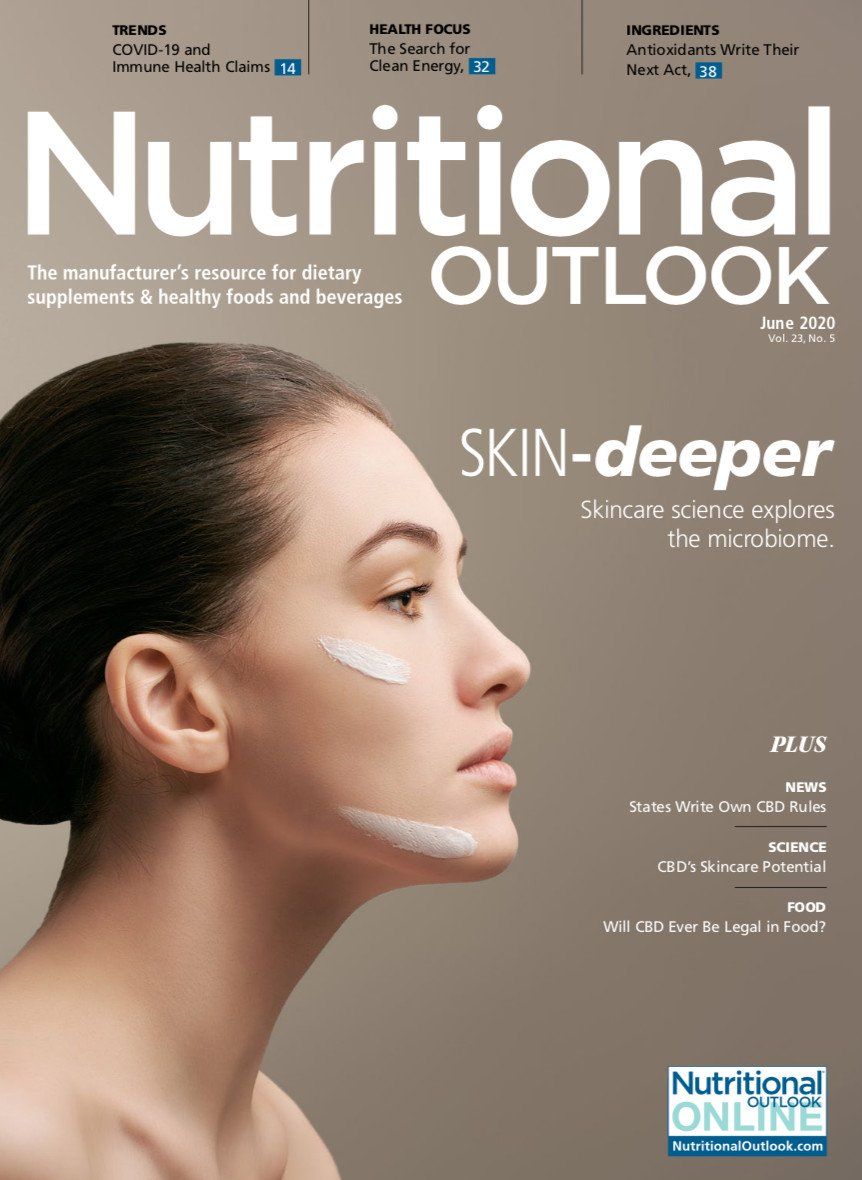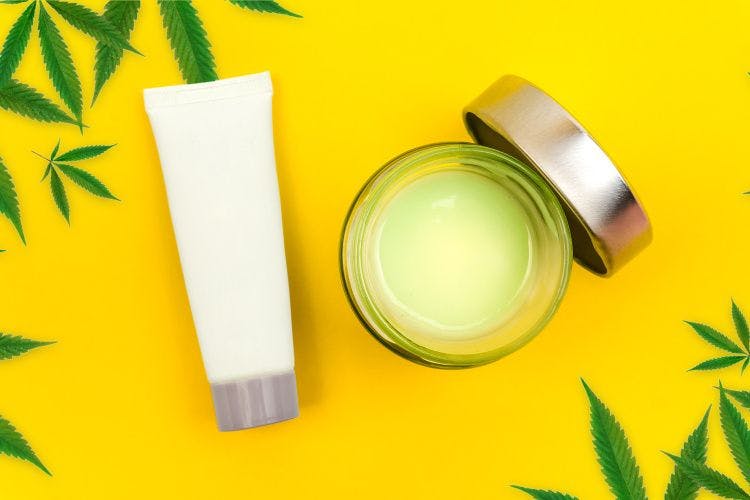Antioxidants in 2020: Their next phase of growth
Navigating the current market using a healthy dose of hindsight, antioxidants are well positioned to write a new chapter in their next phase of growth.
Photo credit © Sciepro - Stock.adobe.com

Antioxidants represent a staple category in the dietary supplement market. But there has always been fierce debate about how much consumers really understand about the term antioxidants. Plenty of people support the term and believe in its health relevance, and yet others think antioxidants has lost a lot of its meaning over time.
Is the Term Antioxidant Still Relevant to Consumers?
On a very basic level, Ross Pelton, scientific director, Essential Formulas (Irving, TX), believes the term antioxidant still resonates well with people. “The generation of free radicals is one of the primary causes of biological aging, and an antioxidant’s ‘job’ is to neutralize excess free radicals,” he says. “For this reason, antioxidants will always be relevant.”
On the other hand, Morris Zelkha, CEO, TriNutra (Ness Ziona, Israel), believes the term antioxidant is too general and not strong enough on its own to create sales. “Consumers are looking for more focused activities, and labels should clearly indicate what the extract is and what it has been clinically researched to do,” he comments.
Marcia da Silva Pinto, PhD, technical sales and customer support manager for Evolva (Reinach, Switzerland), thinks antioxidants have more of a holistic connotation. “Consumers are more aware that the ‘antioxidant’ benefit carries a more holistic meaning because it comprises benefits in several areas such as brain health, skin health, heart health, and, lately, immune health,” she says.
Evolva’s David Tetzlaf, director of marketing, adds his perspectives on this issue. “Data from Innova show that while there is healthy growth in products marketed as ‘antioxidants,’ most manufacturers are introducing products based on health indications, such as brain health, bone and joint health, eye health, heart health, and immune health,” he says. “These health indications are what drive consumers’ online searches or in-store purchases. Therefore, while antioxidant is still relevant as many consumers understand the term, it is not the primary driver of consumer purchases as they evaluate products more holistically.”
Antioxidants have broad appeal because they have been linked to disease prevention and health maintenance, notes Steve Holtby, president and CEO, Soft Gel Technologies Inc. (Los Angeles), who says educating consumers about antioxidants has not been easy because it requires an understanding of cellular biochemistry and physiology.
“Marketers have simply touted that antioxidants help protect the body against oxidative damage caused by free radicals,” he says. “Properly promoting these key nutrients requires taking scientific evidence and presenting it to the consumer in a simple, understandable manner.”
Antioxidants Lifted by COVID-19 Pandemic
TriNutra’s Zelkha believes the COVID-19 pandemic has increased supplement sales exponentially, particularly products that support immune health—and that consumers may classify antioxidant ingredients in this group. “Consumers are also looking outside of the supplement isle and looking to food, beverage, and even cosmetics with added antioxidants,” he claims.
Elyse Lovett, senior marketing manager, Kyowa Hakko (New York City), has also noticed an uptick in demand for antioxidants that support immune function during this time. “While antioxidants can’t prevent against the virus, I think it’s important to understand that there are ways consumers can maintain or increase their immunity with supplements,” she adds.
Kyowa Hakko manufactures Setria, a branded form of glutathione. Known as a “master antioxidant,” glutathione is found naturally in most cells in the body and can regenerate other antioxidants like vitamins C and E. It, too, offers immunity and detoxification benefits, the company says.
Since the novel coronavirus pandemic unfolded, veteran antioxidants like vitamin C are once again surging in popularity given their connections to immunity.
According to Rob Brewster, president of Ingredients by Nature (Montclair, CA), consumers are looking to do anything that helps them feel more in control of their health, and taking immune support supplements is a way they can do that. “Some antioxidants are even able to function synergistically for better results,” he adds. “Citrus flavonoids, for example, are recognized for their synergistic benefits with vitamin C to improve bioavailability and enhance support against free radical production.”
Soft Gel’s Holtby also believes that antioxidants tend to have more strength together than alone. “Some antioxidants may not have relevant biological activity on their own and they do not work through identical biochemical mechanisms. Together, however, antioxidants constitute an interlinked defense system that protects against diseases associated with oxidative stress,” he says. Holtby also points out that most antioxidants lose their protective power once they have quenched a single free radical. “Five antioxidants—alpha-lipoic acid, the complete vitamin E complex (tocopherols and tocotrienols), vitamin C (in both fat- and water-soluble forms), glutathione, and coenzyme Q10—are unique in their synergistic ability to ‘recycle’ one another into their active antioxidant forms,” he explains. “Selenium, an essential cofactor of the enzyme thioredoxin reductase, and flavonoids are also proven antioxidants in the body’s defense system against oxidation,” he adds.
Bruce Brown, president of Natreon (New Brunswick, NJ), considers antioxidants that support immune health one of the fastest growing markets today. He offers some examples of where he sees potential.
“Many consumers are aware of the benefits of potential immune-boosting properties of vitamin C and elderberry, but there are so many other options that provide immune support along with a variety of health benefits,” he says. “Natreon provides unique adaptogens standardized to bioactives with antioxidant potential. For instance, the bioactives in Sensoril ashwagandha support a healthy immune response and have been shown to reduce everyday stress, improve sleep and the ability to focus—all of which are needed during these unique times.”
He goes on to say that the potent polyphenols in another of the company’s ingredients, Capros amla, used to support healthy circulation, support a healthy immune response. The same goes for the company’s PrimaVie Shilajit, an herb standardized to fulvic acid, a bioactive that has been shown to modulate a healthy immune response, the company says.
Breakout Trends in Antioxidants
Among the notable trends in today’s antioxidant market, Evolva’s Tetzlaf notes higher demand for beauty-from-within products, which often include antioxidants for skin health. For resveratrol products specifically, he says more than 31% of product launches in 2019 featured an antioxidant claim and nearly 20% of those launches were for skin health, which was higher than any other indication, including heart health.
There are, however, some terms that have become turnoffs for consumers, such as antiaging, according to Sam Michini, vice president of marketing and strategy, Deerland Probiotics & Enzymes, (Kennesaw, GA). He insists consumers are turning away from any product shouting that it is “antiaging,” and embracing terms like healthy aging and mindful aging, and that there is a subtle but important difference between these terms. “Healthy aging and mindful aging suggest that an individual has more control over how he or she constructs a healthy regimen that addresses the physical, mental, emotional, spiritual, and social,” Michini says.
Finally, as trends have encouraged the idea of adopting healthy, balanced diets, Sevanti Mehta, president of Unibar (Houston, TX), believes the opportunities to supplement a vast array of carotenoid antioxidants has become more possible, especially in replacing synthetic ones with natural versions.
“For the last few years, the food industry has also been making a switch from an abundance of synthetic antioxidants to natural ones,” Mehta points out. “Natural antioxidants are more environmentally friendly and safe and provide a solution for consumers that abstain from synthetic additives. Studies have also shown that natural antioxidants are able to be completely metabolized, in contrast to synthetic.”
A Roundup of New Antioxidant Developments
From 2015 to 2019, the antioxidant category witnessed a 5.7% increase in the number of product launches with antioxidant claims, in-line with the growth of general vitamins and minerals, which grew around 5% during the same period, according to market researcher Innova Market Insights. Helping fuel this growth were several new product introductions and recent research from various antioxidant suppliers.
Solarplast is Deerland Probiotics & Enzymes’ latest antioxidant entrant. An extract of organic spinach, Solarplast is enzymatically enhanced through a proprietary manufacturing process.
“Chloroplasts, such as those found abundantly in spinach and other leafy greens, are organelles within a plant that help it convert sunlight into energy, which helps the plant to grow,” Michini explains. “Chloroplasts in Solarplast contain a natural abundance of antioxidants, energy molecules, and molecular chaperones, and each plays a role in healthy aging by encouraging proteins to fold and refold. Chloroplasts also contain antioxidants that provide the components required to perpetuate the glutathione recycling mechanism (the recycling of spent antioxidants). Solarplast contains all the elements necessary for production and regeneration of glutathione.”
Eevia Health Oy (Seinäjoki, Finland) provides wild-harvested chaga from subarctic forests. Chaga, the company says, has been recorded as the strongest antioxidant ever registered in any natural food, and is particularly regarded for its anti-inflammatory and detoxifying properties. “Our pure, 100%-traceable extract is currently undergoing [ital] ex vivo models, but we may have novel focus in terms of looking at accumulated effects and total leverage of the product through indirect mechanisms,” says company CEO Stein Ulve. “For instance, any mode of action that promotes translation and activity of endogenous antioxidative enzymes is facilitating exponential antioxidative efficacy. A single enzyme can catalyze tens if not hundreds of thousands of antioxidative reactions, while a single antioxidative molecule can perform only one reaction.”
In 2019, Evolva introduced Veri-Sperse resveratrol, which brings increased bioavailability that is nearly twice as high compared to standard resveratrol, according to a recent human clinical trial. “This innovative product answers consumers’ concerns around bioavailability, in addition to increasing the accessibility of easy-to-take products such as fortified instant powder beverages, on-the-go gels, chocolate bars, and melt-in-mouth powder sticks,” says Tetzlaf. Veri-Sperse resveratrol allows formulators the flexibility and ability to meet rising consumer demand for improved absorption.
And that’s not all. In summer 2020, the company expects to introduce what it calls Veri-te Aqua resveratrol, says Clare Panchoo, vice president of health ingredients at Evolva. Veri-te Aqua is the first water-soluble resveratrol on the market, combining NovaSOL technology from German company Aquanova AG and Evolva’s Veri-te resveratrol. This new ingredient, Panchoo says, will give formulators the ability to develop crystal clear functional beverages, liquid shots, and liquid capsules.
Most recently for HP Ingredients (Bradenton, FL), its ParActin Andrographis paniculata has been revealed to have a new mechanism of action. “Oxidative stress occurs when there are too many free radicals for the body to neutralize,” says CEO Annie Eng. “Prolonged oxidative stress may cause damage to DNA and activates NF-κB, which leads to inflammation.” ParActin’s chief active ingredient, andrographolide, has been shown to create an increase in the Nrf2-Keap1-antioxidant response element (ARE) pathway. Andrographolide increases Nrf2 activity, cleaving it from KEAP1, allowing the body to increase antioxidant proteins and enzymes, such as glutathione, superoxide dismutase (SOD), and catalase (CAT), which leads to a reduction in oxidative stress and inflammation.
Brewster from Ingredients by Nature says the company’s lemon flavonoid blend, Eriomin Glucose, is unlike many others in that its antioxidant ability plays an integral part in helping to properly manage prediabetes as a result of supporting the body’s efforts to normalize blood glucose levels. By addressing oxidative stress and the production of free radicals, Brewster says the blend’s primary flavonoid eriocitrin helps to directly support the pathways that suppress cytokine generation and insulin resistance.
With the release of a new ingredient, Eriomin Esport, Brewster says its lemon flavonoids play an integral role in managing oxidative stress and balancing the level of free radicals in the brain, thereby helping neurons to communicate optimally. “Interest in video games continues to rise, and the trend is seen among all demographics because of their accessibility via smartphone, computer, or video game consoles,” he adds. “Now more than ever, video gamers need health solutions, and antioxidants like citrus flavonoids represent a perfect opportunity to address that demand.”
Natreon’s antioxidants are focused on skin health both topically and via “beauty from within.” In human clinical studies, the company says PrimaVie Shilajit has been shown to support the development and maintenance of skin health. “Internally, PrimaVie Shilajit has been shown to increase collagen synthesis, which is the key structural component of the skin, while externally PrimaVie Shilajit has been shown to improve the surface integrity of the skin,” Brown explains.
NextFerm (Yokneam Illit, Israel) just recently conducted a single-center, open-label, single-dose study on 12 healthy adults. Ex vivo analysis of human serum samples showed that Astaferm, the company’s astaxanthin derived from Phaffia rhodozyma, offers significant protection against lipid peroxidation, indicating strong antioxidant activity.
Meanwhile at TriNutra, the company has unveiled ThymoQuin, which it says is the first cold-press standardized black seed oil on the market. It is naturally standardized to 3% thymoquinone, which is its key phytonutrient. In addition, the free fatty acid content of ThymoQuin is below 2%, which helps amplify its anti-inflammatory effect, the company says. The product recently received self-affirmed GRAS status, as well as the recent publication of a study demonstrating its beneficial effects on the reduction of blood pressure in healthy adults.
Unibar just launched CapsiClear, which is the first xanthophyllic carotenoid extract to be standardized to 50% capsanthin. “Capsanthin has little to no previous research, but two recent studies show that it has a wide range of benefits for eye health. Carotenoids like lutein and zeaxanthin have shown an ability to improve protection against blue light, but capsanthin has a benefit profile that extends beyond what other carotenoids have displayed,” Mehta says. “When standardized to 50%, capsanthin becomes bioavailable enough to be able to help reduce intraocular pressure via oral administration, which is very unique.”
Soft Gel Technologies offers an exclusive, patented hops resin extract in softgels called Perluxan, which provides natural, fast-acting relief for minor aches and pains, without the side effects commonly associated with prescription anti-inflammatory products. “The alpha acids in Perluxan are potent antioxidants and are effective at both scavenging free radicals and inhibiting the chemical processes that cause oxidation,” Holtby explains. “Extensive laboratory tests have shown that Perluxan consistently exhibits low IC50 values for both Random Scavenging Activity (RSA) and Lipid Peroxidation Inhibiting Activity (LIA), with a strong effect upon copper induced oxidation in LDL.”
“Recent research has also demonstrated that up to 40% of pain-causing biochemicals (e.g., PGE2) in the body come from a non-enzymatic pathway related to free radicals; it is now considered that a viable anti-inflammatory agent should also have antioxidative activity,” Holtby adds.

Prinova acquires Aplinova to further increase its footprint in Latin America
April 7th 2025Prinova has recently announced the acquisition of Brazilian ingredients distributor Aplinova, which is a provider of specialty ingredients for a range of market segments that include food, beverage, supplements, and personal care.



















